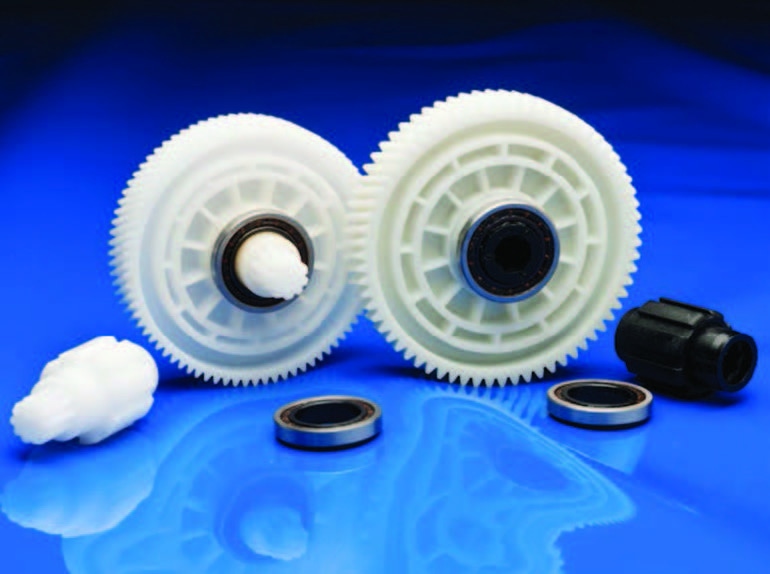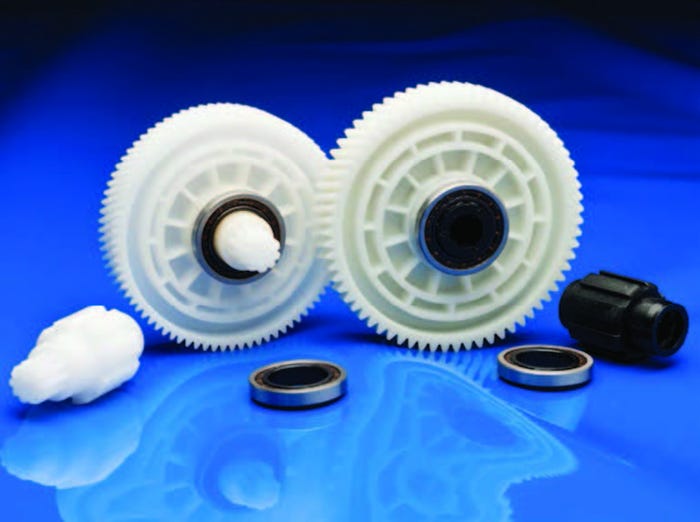Gears make the world go round—literally. Gears are an important component of almost anything that "run" whether it's industrial, consumer products, electrical, electronic or automotive, gears keep things moving! Celanese is deeply involved with application development for polymer materials across all market segments, and while gears might be small components, they play a big role in a product's success.
January 20, 2015

Gears make the world go round—literally. Gears are an important component of almost anything that "run" whether it's industrial, consumer products, electrical, electronic or automotive, gears keep things moving! Celanese is deeply involved with application development for polymer materials across all market segments, and while gears might be small components, they play a big role in a product's success.
David Sheridan, senior design engineer for Celanese, commented to PlasticsToday that while plastic gears are not new there are a number of opportunities to convert metal gears to plastic. "We're making inroads in metal-to-plastic conversion, however, people are used to designing in metal so they tend not to think of plastic as an engineering material," he said. "It's getting them past the idea that plastic gears can't be successful in the manufacturing of high-precision plastic components. Yet, polymer gears are some of the highest precision components in the market and there are a number of specialty gear molders who understand the precision plastic requirements of gears and how to get there with plastic injection molding."
Leslie Rubcich is a platform development manager for Acetal, whose job is finding new markets and working with OEMs in application development, understanding trends and where Celanese material fit. "We definitely look at metal replacement for opportunities for gears and especially from companies that use metal gears," she said. "Our goal is to help companies understand the capability of plastics in gearing applications and the benefits of polymer gears. It's an area of opportunity for us."
Other gear trends include miniaturization, noise reduction, and higher motor output requiring higher-strength gears. "Celanese has many material options and design assistance to help solve gear challenges," Rubcich added.
 Celanese is seeing more activity in the medical and business machine market segments for moving parts, and especially for smaller gears. A driving factor in those markets is the move to get away from grease or oil in general.
Celanese is seeing more activity in the medical and business machine market segments for moving parts, and especially for smaller gears. A driving factor in those markets is the move to get away from grease or oil in general.
The automotive market is a large gear market as well. Celanese materials for gear applications contain a tribological modifier which offers excellent wear resistance and allows manufacturers to get away from external lubricants. "We offer a full portfolio of tribological grades and our new Hostaform SlideX resins offer best-in-class of performance of coefficient of friction and wear" Rubcich said. "Eliminating grease is the goal because grease adds cost and attracts dirt."
The vast majority (95% +) of plastic gears are in POM acetal which provides a good combination of mechanical properties and lubricity, and the cost structure is good as well, explained Sheridan. "In many automotive applications, plastic gears can see upwards of 100 degrees C," he noted. "Acetal is the best for these applications. Additionally, Acetal has great resistance to grease and oil, which is common in automotive parts. However, the biggest inroads for plastic gears are in the business machine industry—there's a real drive to get grease and oil out of business machines."
In one instance, an innovative transmission from Hi-Lex America Inc. continues to reliably and quietly open and close automotive lift gates thanks to high-precision shafts injection molded with Celcon acetal copolymer (POM) and Celstran long fiber reinforced thermoplastics (LFRT). The two-stage reduction transmission of the leading supplier of automotive electromechanical, power closure devices and control cables use precision steel ball bearings mounted on plastic shafts and 2.5-inch diameter plastic gears to achieve the desired reduction between the electric motor and a flexible torsional cable.
The first-stage gear and shaft and second-stage output plastic gear are injection molded from Celcon acetal copolymer (POM) M90 and Celcon GC25T, respectively. The second stage output shaft is injection molded from Celstran PA 66-GF50-02. The Hi-Lex transmission with plastic gears reduces cost, weight and especially noise.
About the Author(s)
You May Also Like




